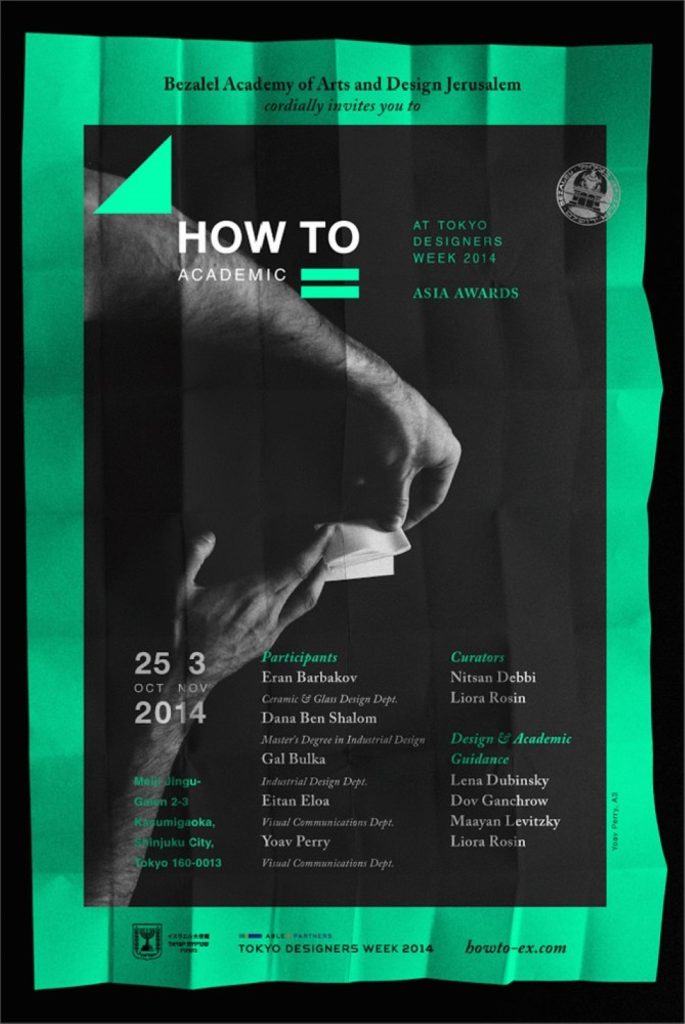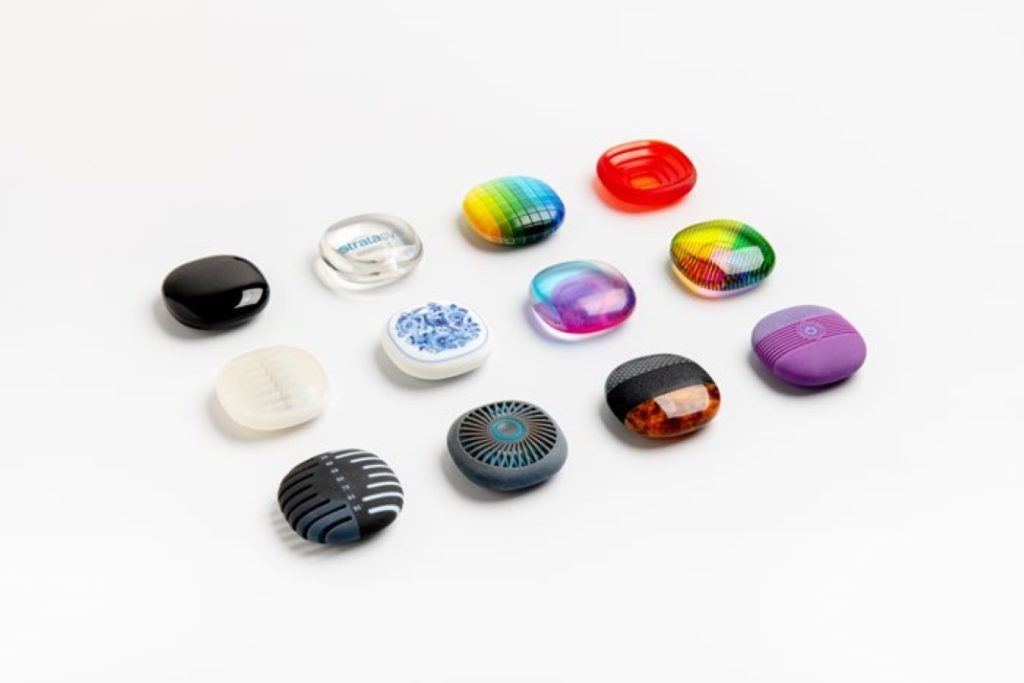It was certainly a source of great pride. As a member of the panel of judges that examined the different projects in the Asia Design Competition, I witnessed the almost unqualified admiration of the Israeli project. It was therefore not surprising that the delegation from Bezalel Academy of Arts and Design won the Asia Award with the “How To” project by designers Liora Rosin and Nitsan Debbi. The Japanese representative of the panel of judges who announced the winner in the Foreign Schools category showered the two designers with compliments, and mentioned each of the individual projects in the exhibition, defining them as “five excellent and brilliant projects”.
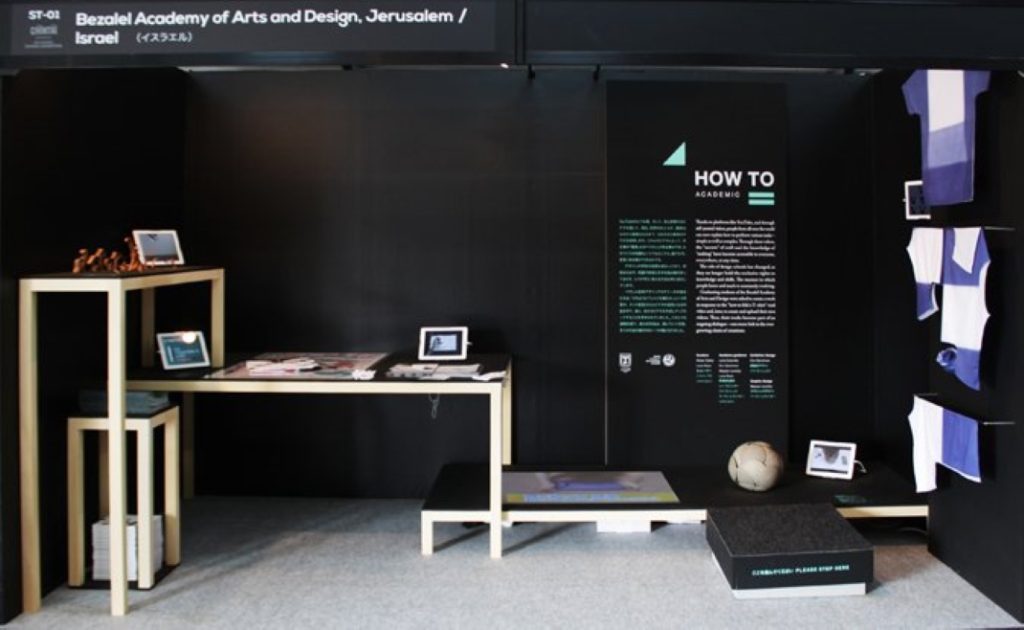
This was the second stop of the “How To” project which was conceived and curated by Rosin and Debbi. The project was first shown in 2012 at Beijing Design Week, at which projects by Israeli and local designers were shown.
At Tokyo Designers Week a different version of the project was shown in which young designers and Bezalel graduates, in collaboration with Bezalel, presented their interpretation of the video clip “How to fold a T-shirt”. The designers were asked to create a new object and an original clip of their own which they would upload to YouTube – a kind of rolling creative energy.
The reference clip:
“One of the advantages of this formula is that it can encompass a very wide range of designers and collaborations”, says Nitsan Debbi. “It can include veteran and highly regarded designers alongside young designers at the start of their career. There’s something in the basic question that invites them to stop and look, which can meet needs in a very diverse variety of areas”. The stopping and looking to which Debbi is referring raises numerous questions concerning the transfer of knowledge, it breaks down hierarchies, and undermines the compartmentalizing worldview of establishments-corporations. Thus for example, the exhibition in Beijing presented a clip of an eight-year-old boy demonstrating how to sharpen knives. While watching the clip raises another question regarding the kind of charisma required from a performer (or teacher) to sweep up others behind him, it also emphasizes the pluralism underlying the internet’s vast knowledge base.
“The initial contact that resulted in the project being shown for the first time in Beijing Design Week was in fact made in Design Museum Holon in 2012”, says Liora Rosin. “That’s where we met Eric Chen who was the director of Beijing Design Week at the time, and from there everything began to move forward”. It was the first design week to take place in the Museum, “We felt that we were a new design week joining longstanding international design weeks. We invited twenty-two design week directors from all over the world to talk about the meaning and objectives of a design week in general, and also in one fell swoop to expose Israeli designers and curators to a group with which they could form connections and work in the future”, says Galit Gaon. “The encounter between Liora Nitsan and Eric Chen was one of the most successful of that week, but there were others as well”.
“In every country around the world you can watch YouTube clips, except in China. This is one of the things that stimulated Eric Chen from the very beginning, our reliance on YouTube clips. So we had to download clips, turn them into files, and send them. But that’s precisely the proof that knowledge in general and this project in particular crosses borders”, says Liora Rosin. “There’s something about YouTube that’s like the Tower of Babel. It instantly invites interpretation. That’s why it was so easy to translate this project into academe and contend with the question: how do you transfer knowledge of practice? This question preoccupies academies today: should knowledge be transferred by watching a master? Should students be left alone to learn by trial and error? And what about the internet? What is its place in the learning process, and how can anyone compete with it, if at all? These questions are at the basis of teaching today”.
Five projects were shown in the exhibition in Tokyo. All the designers chosen to participate in it were designers in whose graduate projects it was evident that they could meet the task of looking and creating a new object and a clip within just two months.
Gal Bulka, a BA industrial design graduate, was struck by how “the shirt almost seems to fold by itself”. In his project he attempted to reproduce this magic and create something that is almost wondrous. Some of the material wisdom was already evident as the basis of his graduate project.
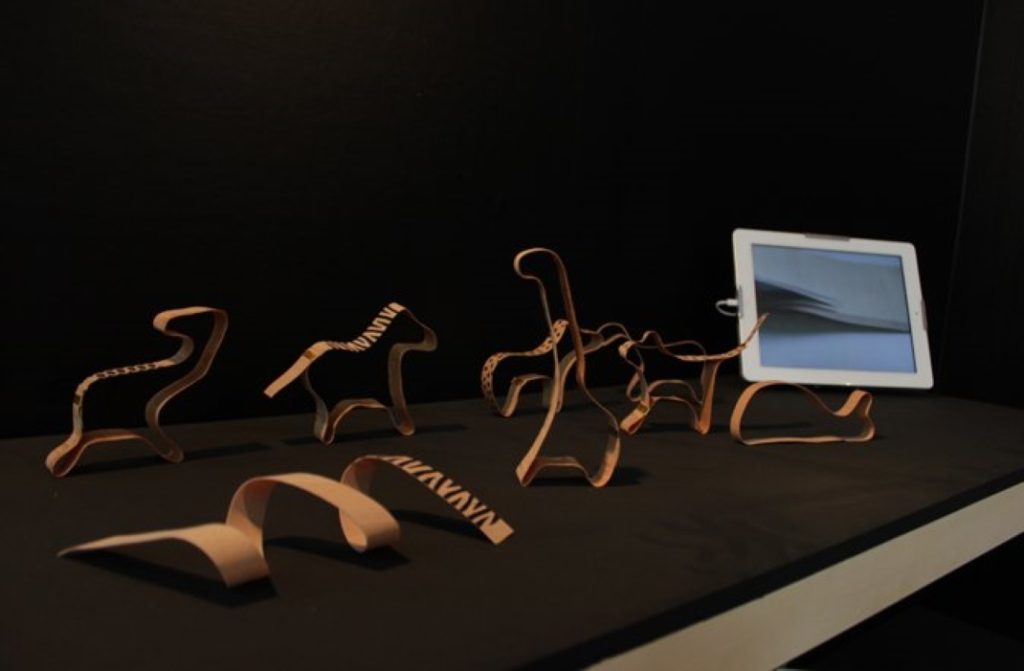
Dana Ben Shalom, an MA graduate from Bezalel and a BA textile design graduate from Shenkar College of Engineering and Design, showed a project that is a kind of design and behavior study. After watching the T-shirt folding ritual on the clip, she came to the conclusion that every person has his own everyday ritual. She approached nine of her friends and asked them to send her an example of folding a shirt. She created the pattern on the shirt according to the folds, painted in indigo. Thus, she did not in fact provide an answer to the question of how to fold a shirt, but asked a new question, the answers to which are infinite.
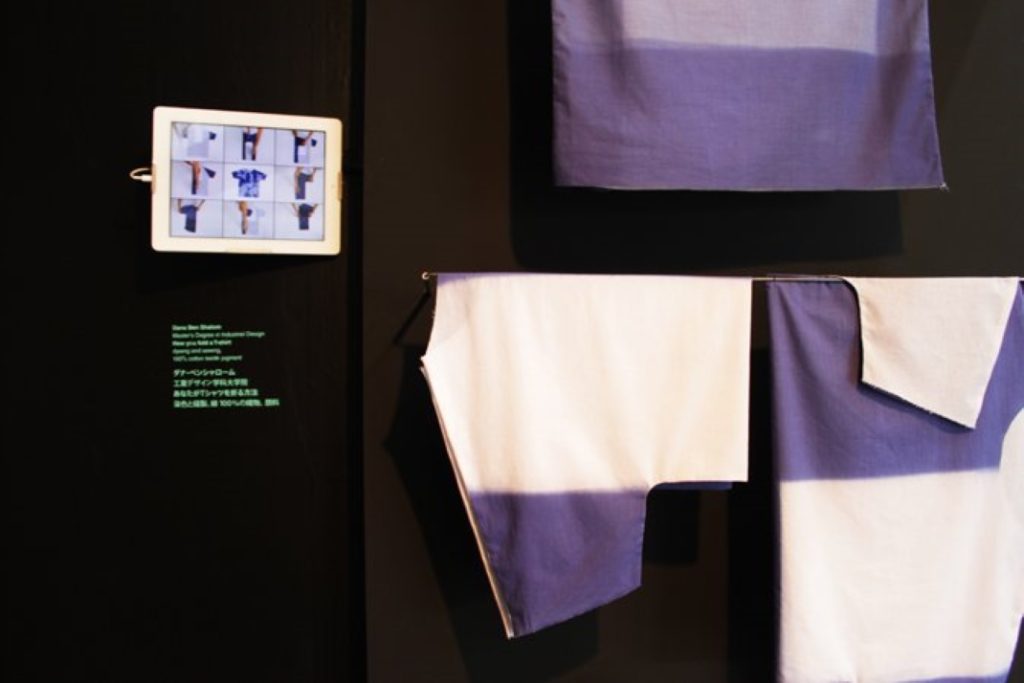
Yoav Perry, a visual communications graduate, created a flip book. He documented the intuitive action of folding an A3 sheet of paper into an A9 sheet in flip books that he made, creating a riveting dance between a simple sheet of paper and hand movements.
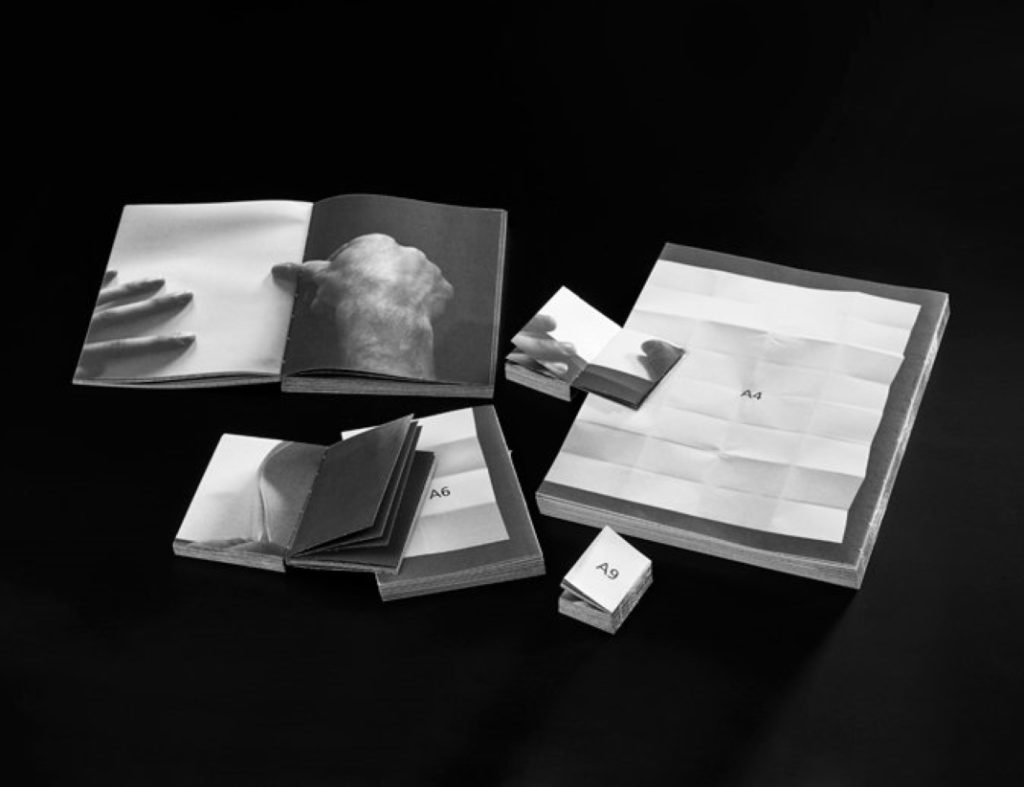
“Virtually all the projects in the exhibition appeal to the Japanese audience”, says Nitsan Debbi. “Gal’s project speaks to the Japanese audience because it involves wood, folding, and maximum effort to achieve precision. It engages in the designer’s control over the material. Dana Ben Shalom made some very clever decisions concerning the Japanese audience – the act of coloring, the blue color, and the simplicity. Yoav Perry’s project creates an expansion and spreading of the folding act. However, when I showed the projects to a Japanese friend he said that they were very Israeli. There’s boldness here that a Japanese designer wouldn’t even dream of, for example breaking from the tradition of using wood”.
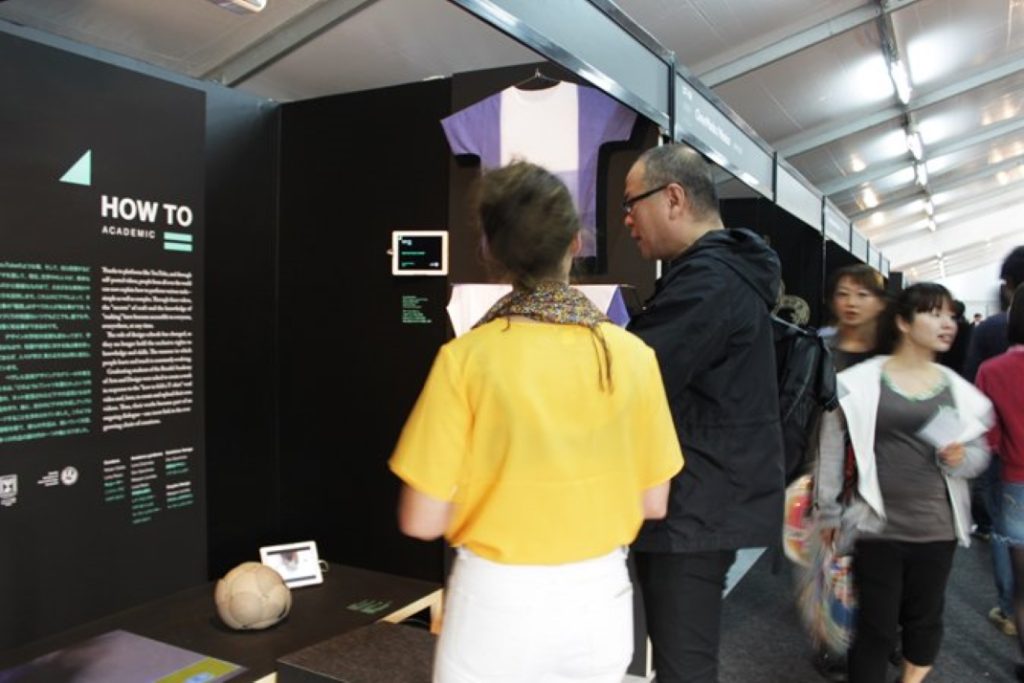
“This event in Tokyo opened the project up to additional channels; in the future it could be a workshop or an academic collaboration or a lecture”, says Liora Rosin, “but curating a new exhibition each time requires time. It’s an exhibition that’s based on user-generated content, and the cost is that it takes time. At the same time, one of the important lessons we’ve learned is about the production of the exhibition. And indeed, in the exhibition in Tokyo we involved Dov Ganchrow as the exhibition designer, and Maayan Levitzky as the graphic designer, and it’s clearly evident in the end result”.
And what’s the next stop?
“We’d be delighted if Glenn Adamson, director of the Museum of Arts and Design in New York, were to invite us to show the project there. If he gave us eighteen months to work, and paid the designers so that we could work in peace, we would do all the rest”, they say.
